I am just going to repeat the key features regarding Dr Ben Marsh’s online presentation next week on Tuesday 20 July at 7pm where he will be speaking on ‘Gateways to Empire: Figuring Out Kent’s Black Histories, c.1550-1800’. This will be the Centre’s final event for the year and we hope you can join us for what promises to be a fascinating lecture.
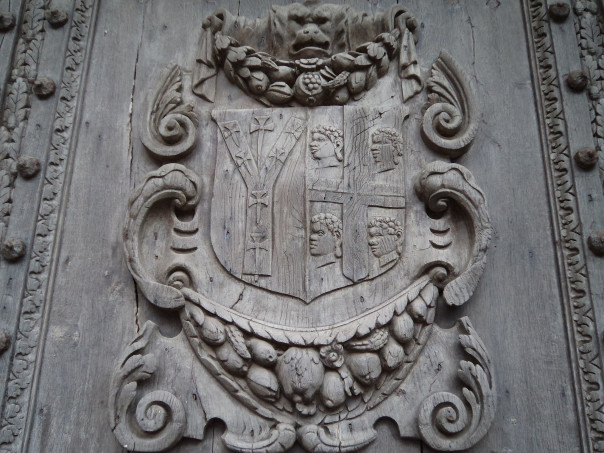
Details about Ben and his presentation are in last week’s blog, as well as its relationship to Maritime Kent through the Ages, which I have been indexing and proof reading with the other editors recently, so if you haven’t seen this, please do have a look. This is the link for next Tuesday: https://teams.microsoft.com/l/meetup-join/19%3ameeting_NDg2YWU3NzEtYjU4OS00MjM2LTk5ZDYtNWM3ZGY2ODZiMjNl%40thread.v2/0?context=%7b%22Tid%22%3a%220320b2da-22dd-4dab-8c21-6e644ba14f13%22%2c%22Oid%22%3a%225438ffb7-ff66-44f6-9ccf-cf504309571b%22%2c%22IsBroadcastMeeting%22%3atrue%7d&btype=a&role=a
No booking is required, the open lecture is free and if you are not used to Teams Live Events, please refer to the helpful hints about joining, also in last week’s blog.
Last week was the University of Leeds’ International Medieval Congress and among those speaking at this virtual conference again in 2021 were several people from CCCU who are or have been involved with the Centre. Among these were Dr Diane Heath, and I’m sure you won’t be surprised to know that she was speaking about medieval animals, in this case whales because the theme of the strand she was involved in was ‘water’. Another person whose name I’m sure you will recognise is Dr Harriet Kersey and she was discussing 13th-century aristocratic women, again not a surprise to those who know Harriet. The third person with links to the Centre is Jane Richardson, a member of the Kent History Postgraduates group, and keeping with the theme of women she was exploring the theme of late medieval lay piety through the wills of a husband and wife from the area close to Tonbridge.
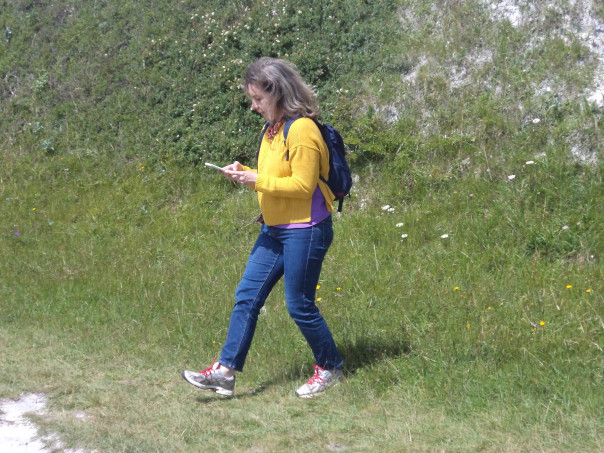
The third topic for this week is merely going to be a short notice to alert anyone interested in undertaking a Kent history project that the Allen Grove Local History Fund, under the guardianship of Kent Archaeological Society, has reopened and details are available on the KAS website: https://kentarchaeology.org.uk/grants-and-prizes
As I said last week, I was due to join Dr Claire Bartram’s IHR Centenary Event planning meeting at Dover last Thursday and we duly met with all of those involved from Geography, Education, English Literature and Creative Writing at the NT White Cliffs centre, just to the east of Dover Castle. It was great to actually meet in person and we had an enjoyable and productive time walking along the cliff path towards the old lighthouse. For not only were there lots of different conversations about what ‘Dover’ means and has meant to people over the centuries, with a particular emphasis on modern times, but we also watched a buzzard riding the thermals, heard several skylarks and admired the delicate beauty of orchids and quaking grass – one of my favourite grasses. As with all good meetings, we came back from the walk and enjoyed refreshments and explored further how this predominantly online event, scheduled for September, will work. More on this as things progress, but I thought you might enjoy a few photos of the walk.
Now to the two main items for this week and I’m going to start with the Lossenham Project’s Wills Group meeting that took place on Monday afternoon, that is after the palaeography workshop in the morning. Members of the group have been working very hard over the last few weeks to finalise arrangements and I’m extremely grateful for all their efforts. There were twelve of us, only Keith couldn’t make it and it was lovely to welcome Celia who has joined us from the Lenham and Charing Palaeography Workshop group. The main purpose of the meeting was to demonstrate the revised wills spreadsheets to everyone that have been devised to capture information from the late medieval and early modern wills from the parishes on either side of the county boundary along the Rother valley and up into the Wealden fringe. In total we are looking at about 20 parishes in terms of the highest level PCC court records, but as we move into looking at wills from the lower Consistory and Archdeaconry courts, which are far more numerous, we are going to concentrate on Newenden and its adjacent parishes and only gradually move out from there. This is because as a group we have been able to freely download from TNA the PCC wills, thereby making them easier to work on whereas the lower court wills will need to be looked at in the Kent and East Sussex archives.
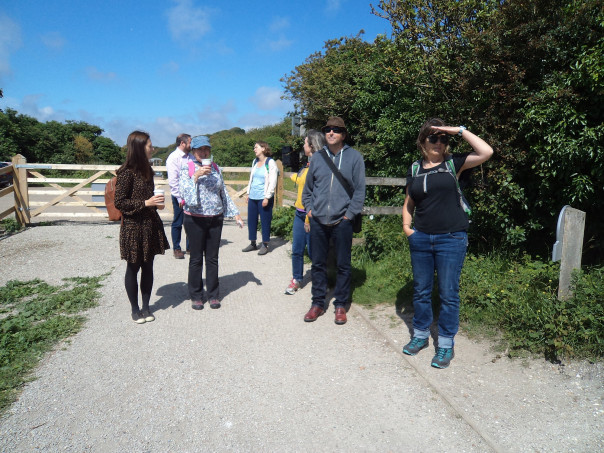
This was the second meeting regarding the revised wills spreadsheets that had come out of the original pilot study. Consequently, this development comes from Sophie’s first template and its revision by Rebecca, Sue M and Jason, which means we now have two spreadsheets to capture the information: that for wills pre-1559 and those for post-1559. In other words what might be categorised as ‘Catholic’ and the ups and downs of Henry VIII, Edward VI and Mary’s reigns; and those securely ‘Protestant’ after Elizabeth I’s accession. As demonstrated by Rebecca, with Sue and Jason chipping in, these spreadsheets are now more sophisticated with various dropdown options for certain columns, as well as instructions to help data entry. The point being to capture sufficient information to highlight matters relating to family, property, occupation and household goods, networks and relationships, but not making it so time-consuming that the process becomes inefficient or overwhelming. To aid this Sophie and Jane, starting with the abbreviations sheet provided by the others, have added abbreviations for the pre-1559 wills, which means we also went through these and everyone seemed happy with the final list. Having such standard abbreviations is vital for later analysis because the search feature will be used by researchers and people need to feel confident that it will, for example, pick out a particular feature across the whole spreadsheet.
Another modification to the previous spreadsheets is the use of a standard format for will and probate date, thereby giving the facility to sort chronologically, and the spreadsheets are set up so that the will reference, surname and forename are always visible. Similarly, there is a sample will at the top of the page that will be visible all the time, thereby acting as a crib sheet when people start using the spreadsheets to enter ‘their’ wills.
All of these features were demonstrated to the group and there was a lively discussion with the result that a couple of tweaks were made and by the end of the meeting everyone was happy with the result. However, it was recognised that this may not be quite the last version but it was agreed that if as people started using these spreadsheets they aren’t happy, they need to mention this as soon as possible. One of the first tasks is transferring the data from the old spreadsheets to the new ones, which Jason has generously agreed to do, and in many ways this will be a very good test of the final versions. It will also mean that once this has been completed the old spreadsheets can be deleted from the Google drive.
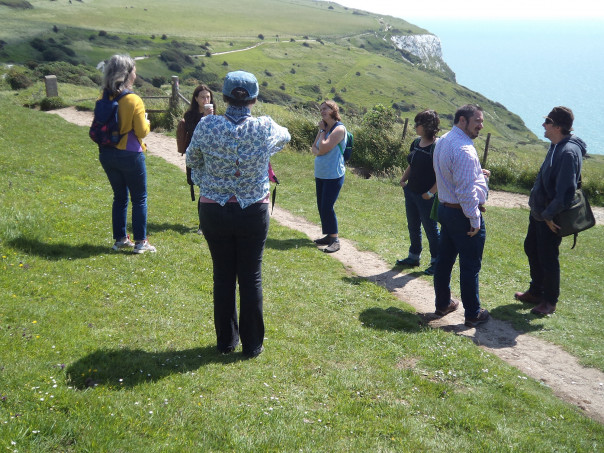
Regarding the next steps beyond this data transfer, it was agreed that people could start using the spreadsheets (or carry on transcribing wills, possibly to be entered by Jason at a later date) but as currently it is not clear where the Google drive can be backed up in terms of the spreadsheets, Sue M has created a folder on the drive where people can put their dated versions of the spreadsheets because obviously we don’t want to lose anybody’s work. This is an interim solution while the new Lossenham website is under construction and hopefully an easier and more secure solution will be found.
In terms of transcribing/entering the PCC wills data, Northiam is being done by Annie, Keith and Sue M, Newenden – Jane, Sandhurst – Maeve and Rebecca (almost completed), Iden – Sara, Rolvenden – She H and Celia, Wittersham & Reading Street (part of Ebony) – Sue C, and Keith with Bodiam now being taken on by Maeve, Tenterden – Rebecca, Goudhurst – Jane, and Playden – Sue M. This is great and to ensure there is no risk of duplication by mistake, on the various parish wills indexes, also on the Google drive, there is now a column for people to indicate that they are in the process of doing that particular will. The other important aspect is to download the remainder of the PCC wills the group needs and these, too, people volunteered to do while they are still freely available.
Finally, Sophie mentioned that she has started on the pre-Dissolution lower courts and has had a day on the Newenden wills. She has another day in the archives booked for next week and intends to move on to Rolvenden as an adjacent parish. This is going to be more time consuming because of the need to work in the archives (microfilm) but hopefully will offer a rich source of information specifically on Lossenham Priory. This brought a very productive meeting to a close for we have a plan going forward and my thanks to everyone involved. The next meeting to assess progress is planned for Friday 3 September at 2pm, and, as always, many thanks to Annie for setting up the Zoom meeting
Turning now to Janet Clayton’s presentation to the Kent History Postgraduates, you might say we stayed in west Kent, moving north to Orpington and the Hundred of Ruxley. As regular readers of the blog will know, this is the subject of her doctorate, especially the manor of Scadbury and its lay lords. In contrast to ecclesiastical manors, far fewer financial and other sources survive for lay manors which means researchers are heavily reliant on archaeology. Janet has adopted this interdisciplinary approach and she showed the group the results of the Lidar survey alongside various maps of the area to demonstrate that the Scadbury lands were broadly on the higher ground and not in the valley where there was access to water power.
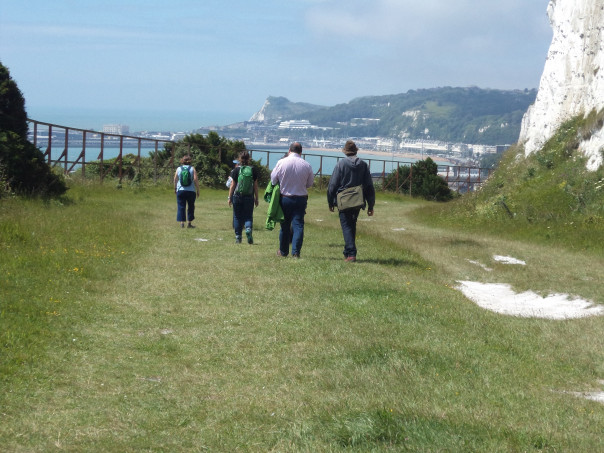
The Scathebury family who held the manor in the 13th and early 14th century have been the subject of Janet’s research, not least because she is fortunate to have the detailed 1301 lay subsidy records for Ruxley Hundred. These are invaluable because they offer considerable detail about John II de Scathebury and his neighbours in terms of their farming and other enterprises. Although not the wealthiest in the Hundred, he was number five regarding the total value of his surplus (taxable wealth), the return does show that he was not solely dependent on oxen for ploughing having plough horses as well as cart horses. He also had a small herd of cows, 16 pigs and 60 sheep. He engaged in mixed farming, growing wheat, barley and oats, as well as legumes in the form of peas and vetch, while he presumably had meadow land from which he took his hay crop. Corroborative evidence of such a farming regime comes from the archaeology for as Janet said, the environmental results have included spring and rivet (winter) wheat, as well as barley and seeds from meadow species and weeds commonly found in winter and spring sown crops. Further evidence of husbandry has come from the finding of a weeding hook and all of this together demonstrates that John de Scathebury in 1301 would seem to have been using agrarian practices similar to those of the ecclesiastical lords in Kent, which Bruce Campbell sees as putting them at the forefront of farming practices nationally.
In previous presentations, Janet has concentrated on the family’s sheep flock, but this time her focus was the cereals, especially the wheat, although she did note that John also had a lead vessel for brewing, which probably relates to his barley. For the wheat, his 30 quarters suggest far more than subsistence and thus was he selling his surplus wheat in London? This is certainly feasible but, as Janet said, practically impossible to prove.
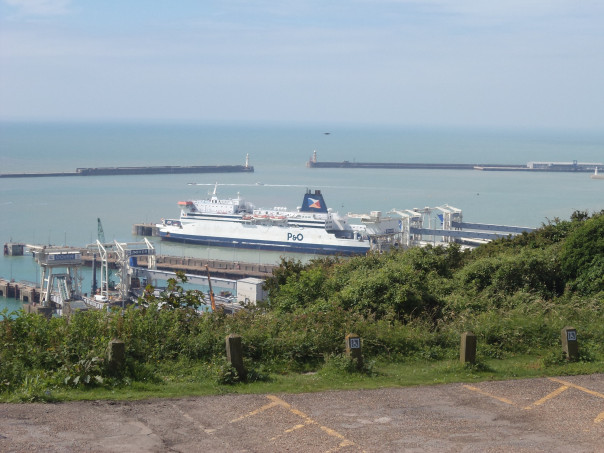
Nevertheless, this in many ways brought us on to the second half of her presentation that drew on evidence from court cases in 1311 and 1312 and then 1348 and 1349. Those involved would appear to have been John II and John III, the father and son accused in the 1310s of attacking Sir William de Craye’s property in St Paul’s Cray, land presumably better than their own being lower down in the valley. Although fined this may not have stopped their desire for such lands because when John died his son not only acquired his share of Scadbury manor but also a mill and a house in St Paul’s Cray, as well as some other land. Now this was a windmill not a water mill, as revealed in the debt case from the late 1340s. John with two other men had borrowed £200 but had failed to pay back the debt within the required time and the claimant therefore sought the court to secure the debtors’ assets to clear the remainder. In John’s case, the court came after his mill, the timber assets comprising considerable numbers of small and large shotboards, laths made of fir and oak, as well as a post from a former windmill. Janet thinks in total this may have comprised most if not all of the mill, but whether it was dismantled as a result of the case is unclear.
She thinks she knows where the mill may have stood and she has found a number of contemporary illustrations of what such a post mill would have looked like, but she would like to find out more about medieval Kentish windmills because all the records she has come across so far refer to water not windmills. This sparked a considerable discussion, although no one within the group had come across such records in their own research except that Maureen said she believed Tonbridge Priory had had such a mill. The consensus seemed to be that there may be comparable material elsewhere, even if not from Kent, but it is still interesting to speculate how John had deployed his mill and whether it could have been (re)erected from the assets confiscated by the court. So we ended up with more questions than answers, but that’s not unusual! And very many thanks to Janet for a fascinating, well researched presentation, and to everyone who attended, our final meeting of the year will be in two weeks time.
 Centre for Kent History and Heritage
Centre for Kent History and Heritage Sheila Sweetinburgh
Sheila Sweetinburgh 1329
1329

